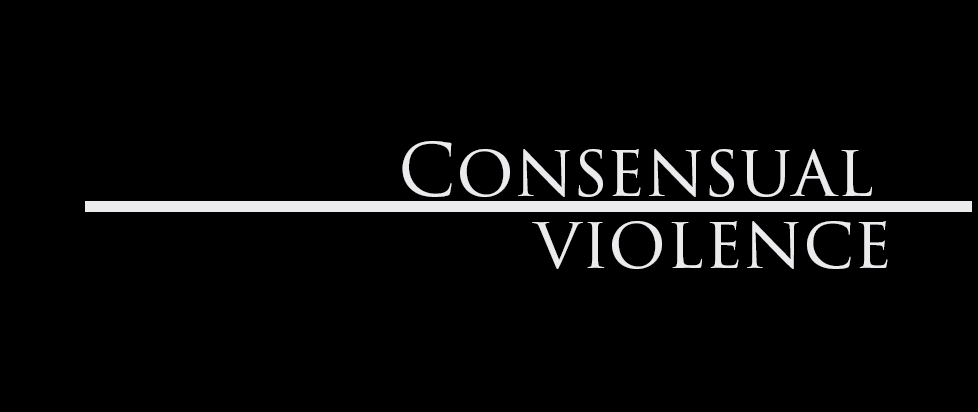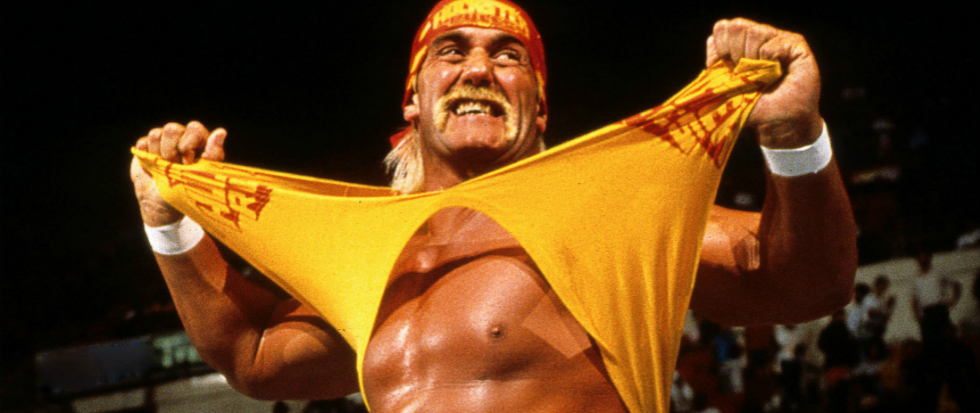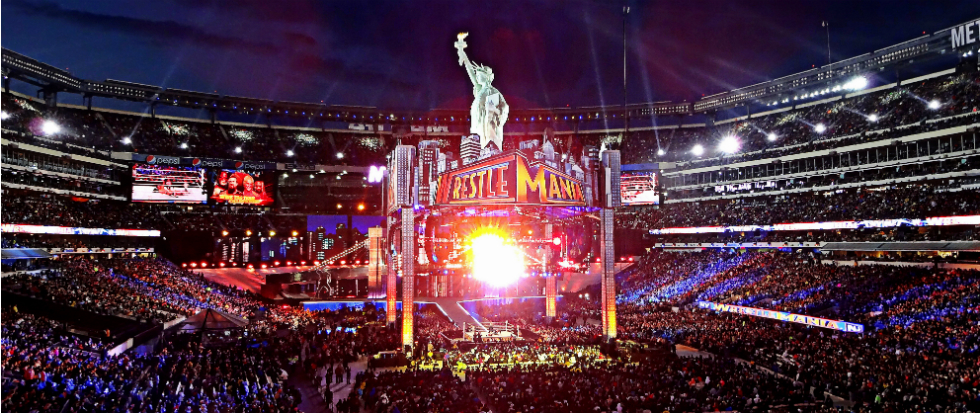
Consensual Violence
Blood sports are an active brutality on the lives on the participants, a grotesque display of physicality and punishment that leaves them pummeled on the side of the road. This weekend was WrestleMania, the largest event that the Western based wrestling company WWE puts on, a giant pageant of men in tights and women dressed like Final Fantasy villains. It’s a spectacle of muscles and showmanship but at the end of the day, usually bloodless.
There are exceptions of course. Unlike the act of mashing two action figures together, the WWE incorporates living performers and anytime you put together that much metal and muscle there is going to be some level of agony – wrestling is real and fake simultaneously, and a match like the ‘98 Hell in the Cell match between Mankind and the Undertaker is emblematic of this. Honestly throughout the 90’s Mankind bled for his sport so often that he is perhaps why you could call the performances a bloodsport.
I’m not going to talk about WrestleMania. This past year my relationship to the WWE has grown complicated, as they continue to not grow with the times, as they start a large partnership with Saudi Arabia that falls so clearly towards propaganda, etcetera etcetera etcetera. It’s hard engaging with media that has been a part of your life since you were a kid, watching with your grandfather as he sent you tapes in the mail that he recorded off of an illegal satellite, but hasn’t seemed to really grow in those 20 years.
My relationship with the WWE ebbs and flows, but my relationship with blood sports feels eternal.
When I played collegiate rugby, there was a common phrase that went around. Soccer is a gentleman’s game played by ruffians and rugby is a ruffian’s game played by gentlemen. Rugby was somehow meant to be seen as elevated, even as you exited the field covered in dirt and blood, sometimes your own and sometimes the blood of the people around you. When I split my lip on the field, my tooth going through my own skin, blood pouring down my face and mixing with rain, I laid in the grass as another player poured water over my chin to measure the damage before sending me off to the hospital. In the realm of collarbones snapping mid-game, of broken wrists and concussions that pile on top of each other until they compound, a tooth going through your lip is minor, if literally scarring.
I’m not sure how you can claim gentlemans status when a regular fixture of collegiate rugby games and their corresponding socials consisted of drinking beer out of another mans boot when you made a party foul or running naked around the block to celebrate a successful try. But gentlemen will always find a way to define their sports as being above the lower classes — see the growth of the UFC from rich boys in Brazil to a modern fighting phenomenon to understand.
I don’t watch much of the UFC — its brutality is a bit much for my partner who shirks from rugby and who would wince at the literal blood smeared across the mat in UFC battles. UFC fights are supposed to determine whose fighting style is the best, but it always seems to come down to grappling between two men with broad brows and clenched fist as they try desperately to make the other submit. Submission is the biggest part of UFC. That and the blood.
All of my information on the UFC comes from seeing fights across full bars and Buffalo Wild Wings, and also from the double duo of Felix Biederman and Jon Bois talking about the UFC in a five part web-series called Fighting in the Age of Loneliness. It’s the kind of title that calls to mind complicated essays from publications like Real Life, and it’s got a written style that is a on part with other Biederman essays (I personally liked his Rich Piana obituary). It’s simply about the UFC. Fighting in the Age of Loneliness is a fitting companion to something so obviously bloody — it’s erudite and researched and written from a point of affection. It has words like “machinations,” but also “weeaboo” so if you’re familiar with the Chapo Trap House style and you dig that, it’s that. But less angry and nihilistic. There’ a fondness there.
It’s a fondness anyone who has ever bled for these sports can understand.
There’s this element undercutting all of this, of course, this concept of fighting it out with your fists. It’s something that goes into the UFC — as pre-planned as the conflicts are — or something as clearly staged as WrestleMania. The WWE will pull in personal conflicts frequently. These aren’t simply people fighting for the title, they’re also fighting each other on personal levels. In the UFC this same storytelling is present though held in the realm of press conferences and weigh-ins rather than the WWE’s promos. It isn’t just would you fight this man to show that you’re right, it’s the idea that you would fight them and that would prove that you’re right — that winning in a show of physical force would disprove what that man said about your mother in a weigh-in, or that winning would show that you deserve to keep your romantic partner. It’s not necessarily masculine, I’ve met too many women ready to punch you for a perceived slight, seen too many fights in school hallways where women threw each other into walls by their hair. Some people would say that it’s related in some way to a masculine impulse, but those people are usually also very, stupid even if they teach at the University of Toronto. There is something there though, something underneath the skin that pushes towards violence and in seeing violence in others is somehow sated.
All of this brings me to STREETBEEFS. On your TV, there may be a network of free channels called Pluto — 24 hour channels of Forensic Files or Dog the Bounty Hunter. Nestled in these channels is CombatGO (Channel 215), who despite its closeness to Glory Kickboxing (Channel 217), frequently also shows kickboxing videos. Occasionally though it falls into a weird grey area — showing videos of some man’s backyard in Virginia, where clear amateurs stumble around a grass arena. They’re dressed in street clothes, hoodies and jeans and work boots, and they stumble through a set of improvised rounds. There’s a man there named Scarface, and as his moniker suggests, his face is scarred. He bears little resemblance to Al Pacino.
STREETBEEFS is the obvious response to things like UFC and also to that urge to settle disagreements with fists rather than with the law. It’s designed that way. In his description on YouTube, because STREETBEEFS is also on YouTube, Scarface writes: “ I take pride in providing a safer outlet for aggressive young men and women to solve disagreements without killing each other or going 2 jail.” He does that. In STREETBEEFS, in the field in the back of his house nicknamed Satan’s Backyard, local adults with actual conflicts are invited to resolve those conflicts with their hands rather than words — though that isn’t all he does.
In the NYTimes documentary on the subject (Guns to Glove), Scarface is shown taking two guys who had come to his backyard to fight, and offering to pay off the debt so that the beef would be quashed. Both men agree, and it doesn’t come to blows or to a shoot out in the street. Similarly, there’s this fight between two unnamed women. Shot at night, clearly lit by a portable light, but seemingly by someones high beams, two women duke it out over a real conflict — one of them stole clothing from the other, allegedly to sell it for meth. It’s a real conflict and both women are clearly highly upset. It has the same tenor of watching girls fight in high school, blood smeared on cinderblock, but here there are mediators. Near the end, Scarface has the two women stop fighting and resolves the conflict. No more bloodshed.
Most of the people featured in STREETBEEFS are not returning fighters. They come, they fight, and they squash their beef. It’s part of the rules. When you take a fight in Satan’s Backyard, whoever wins, it doesn’t matter. The beef is settled.
It’s a pugilistic solution, but one that feels appropriate in the day of mainstream bloodsports. It’s less cinematic per se, none of the fighters have sponsors or Paul Heyman talking up their prowess. They’re just angry. They needed an outlet. Now they have one.





